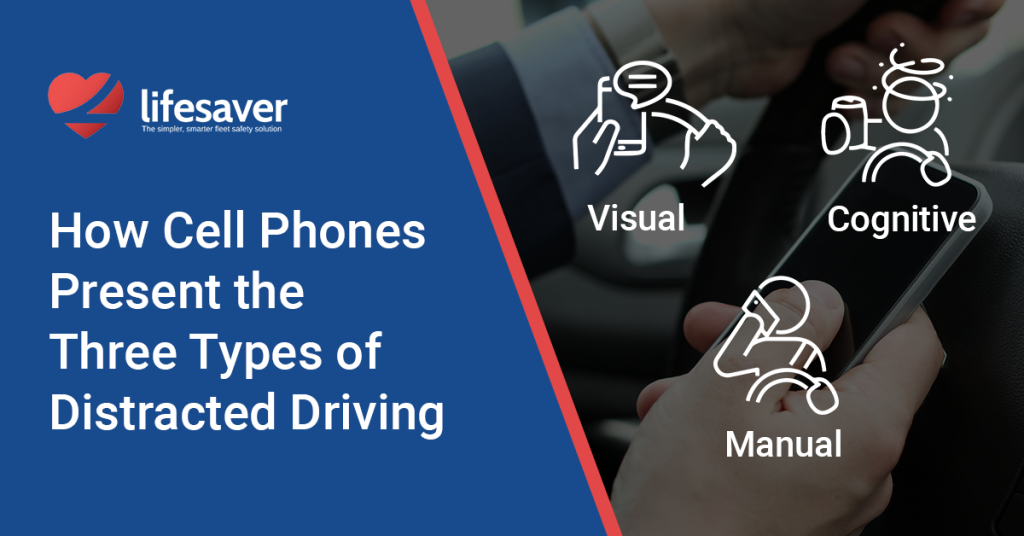Cell phone use in modern society has become almost as vital as breathing. However, this device can become lethal when used behind the wheel. Distracted driving takes various forms, each contributing significantly to accidents and fatalities worldwide. This blog post outlines the three types of distracted driving, emphasizing the pervasive role cell phones play in each category.
What are the Three Types of Distracted Driving?
Distracted driving can be broadly categorized into three types: visual distraction, manual distraction, and cognitive distraction. Each type describes the manner in which distractions affect a driver’s ability to operate a vehicle safely. What’s alarming is the realization that cell phones are a common denominator in all three categories, underscoring the need for increased awareness and stronger preventive measures.
1. Visual Distraction
Visual distractions occur when a driver’s eyes are taken off the road. Whether it’s glancing at a text message, browsing through social media notifications, or even using navigation apps, the moment your gaze shifts from the road to your phone, the risk of an accident greatly increases. According to the National Highway Traffic Safety Administration (NHTSA), reading a text takes your eyes off the road for 5 seconds. At 55 mph, that’s like driving the length of an entire football field with your eyes closed. The gravity of this action cannot be overstated. It compromises not only the safety of the driver but also the safety of passengers, pedestrians, and other drivers
2. Manual Distraction
Manual distractions involve taking one or both hands off the steering wheel. This can range from typing a message, scrolling through contacts to make a call, or even adjusting your phone’s GPS settings. Each of these actions requires the driver to relinquish physical control of the vehicle, even if only for a moment. This reduction in control can lead to delayed reactions to sudden road hazards, inability to make corrective steering actions promptly, and, ultimately, accidents. As a result, the convenience of (and compulsion to) always being connected becomes a dangerous gamble on the road.
3. Cognitive Distraction
Cognitive distractions involve a lapse in the driver’s mental focus. Engaging in a conversation, whether through text or a call, significantly diverts attention from the task of driving. The brain’s capacity to process moving images decreases by up to one-third when talking on a phone, regardless of whether it’s hand-held or hands-free. This diminished focus can lead to a failure to recognize critical cues, make necessary decisions, or react appropriately to road conditions. Cognitive distractions underscore the dangerous misconception that hands-free technology is safe to use while driving.
The Triple Threat of Distracted Driving
Cell phones, with their multifunctional capabilities, have the ability to create all three types of distracted driving, making them a unique and pervasive “triple threat.” They can demand your visual attention with their screens, your manual input through texting or browsing, and your cognitive focus during conversations. Despite widespread recognition of the dangers posed by using cell phones while driving, many continue to underestimate their own vulnerability to these risks.
Mitigating the Risks
Addressing the challenge of cell phone-related distracted driving requires a comprehensive approach:
- Legislation and Enforcement: Many regions have implemented laws banning the use of hand-held devices while driving. However, the effectiveness of these laws depends heavily on enforcement and the public’s compliance.
- Technology Solutions: Advances in technology offer promising avenues for mitigating distracted driving. Apps that disable texting while driving, or systems that lock the phone while the car is in motion, are examples of how technology can help curb this issue.
- Education and Awareness: Increasing awareness about the dangers of distracted driving, especially among young drivers, is crucial. Educational campaigns that highlight the potential consequences of distracted driving can play a significant role in changing behavior.
- Corporate Responsibility: Companies can also take a stand by implementing policies that discourage employees from using phones while driving for work-related communications. This not only promotes safety but also sets a standard for responsible behavior.
How Does LifeSaver Mobile Prevent Distracted Driving?
LifeSaver Mobile will make driving safer by addressing all three main types of distracted driving. The driver learns not to interact with any mobile device that has the LifeSaver Mobile solution. By not interacting with the mobile device, the driver lessens the risk of physical distraction, visual interaction, as well as cognitive interaction. The risk of physically handling a cell phone is virtually eliminated, along with the associated risk of visually looking at the device and cognitively focusing on interactions with the device.


